Quality & Safety Standards
Buona Foods Inc. is committed to supplying Fresh and Safe Mushrooms. Our commitment to food safety is an integral part of our company’s objectives, ensuring that management and our dedicated employees are aligned with our common goal of following established food safety guidelines and continuing improvement. All of our employees are knowledgeable and trained in the aspects of food safety protocol that affect their specific jobs. Along with this we are committed to our food safety culture, which we have implemented throughout our food safety training initiatives.
How do we maintain our High Standards and Commitment?
- By ensuring we have the appropriate resources and Management Commitment
- We perform Monthly Internal Food Safety audits to maintain the highest quality standards for our facility and employees.
- We are certified through FDA/ Pa Dept of Ag inspections, Annual Primus GFS Inspections (including HACCP), and OU Kosher Inspections
- Each member of our food safety team is certified in HACCP, and our food safety manager is PCQI (Preventive Controls Qualified Individual) certified
Our Commitment goes beyond just following regulations. In the past year, we have committed to using non-toxic chemicals that are safe for our employees and the environment. We are ensuring our cleaning and sanitation teams have a safe environment to work in without exposure to toxic chemicals.
The Growing Process
Mushrooms are grown in a manner unlike most other types of produce. This is because they are Fungi, not plants. Plants are autotrophs – they produce their own energy through photosynthesis. Mushrooms, on the other hand, are heterotrophs that obtain their nutrients from decaying matter that we call substrates. Since they don’t require sunlight to grow, mushrooms are cultivated in the dark. This is the basis for a rather unique method of farming that allows us to cultivate our crops indoors under carefully controlled conditions. So, strap on a headlamp and join us in the mushroom house to see how its done!
Mushroom Houses
It’s not the heat—nor the humidity. All 17 of our long buildings are equipped with powerful climate control systems to regulate temperature, humidity, and ventilation. We would keep our mushrooms cool as cucumbers, except that they’re mushrooms, not cucumbers. In any case, our buildings are layered with over 114,000 square feet of floor-to-ceiling beds, producing over three million pounds of mushrooms annually.
Compost
As everyone remembers from science class, crops need nutrient-rich soil to synthesize their energy and grow into delicious produce. With our mushrooms, the key to that healthy growth process is our carefully-made, pasteurized compost full of straw, corncobs, and, yes, manure.
Spawn
Speaking of science, you’d need a microscope to see the tiny spores or “spawn” that take four months to mature into mushrooms. Seven to 14 days after the compost is inoculated with the spawn, a network of thread-like cells called “mycelia” (yes, these terms will be on the test later) forms and eventually bears mushrooms as its fruit.
Casing
Once our mycelium develops and starts to produce, we cover the beds with a layer of casing— usually peat moss—to act as a moisture barrier. Eighteen to 21 days later, tiny mushrooms begin forming, and we can hardly contain our excitement for what comes next.
Harvest
Next, our harvest team spends three to five days handpicking each mushroom crop. We’re careful to ensure the delicate mushrooms are harvested undamaged before we move on to another crop. By staggering crops across eleven-week growing cycles like this, we ensure both quality and sustainability.
Processing
Of course, that’s not the end of each mushrooms’ journey. We need to get them to you! But before we ship them, we put just as much care into processing and packing them as we do into growing them. This efficient process allows us to produce high volumes of fresh mushrooms for foodservice operators and retailers. We’ll rinse, slice, and pack your mushrooms to your specification. They’re then vacuum-cooled, prepared for your order, and loaded onto our refrigerated trucks.
Distribution
Finally, the step you’ve been waiting for: our mushrooms becoming your mushrooms. Our crops leave our state-of-the-art processing facility on refrigerated trucks equipped with air-ride suspension, ensuring optimum freshness and less bruising. Just like that, you’re well-stocked with fresh, delicious mushrooms. And don’t worry, we were just kidding about that test earlier—but if you’re itching to learn more about the latest mycelia scuttlebutt, we’re happy to share.
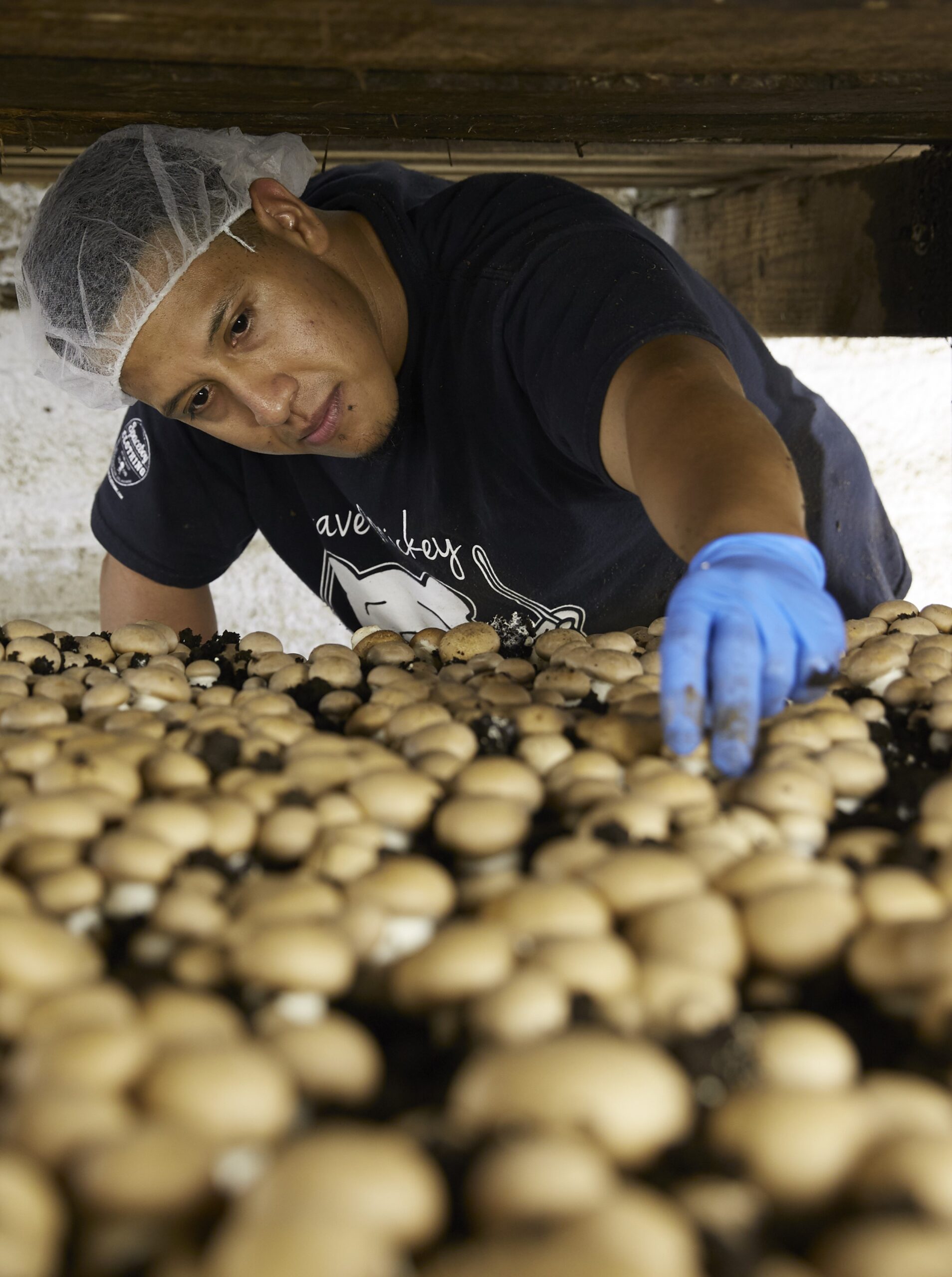

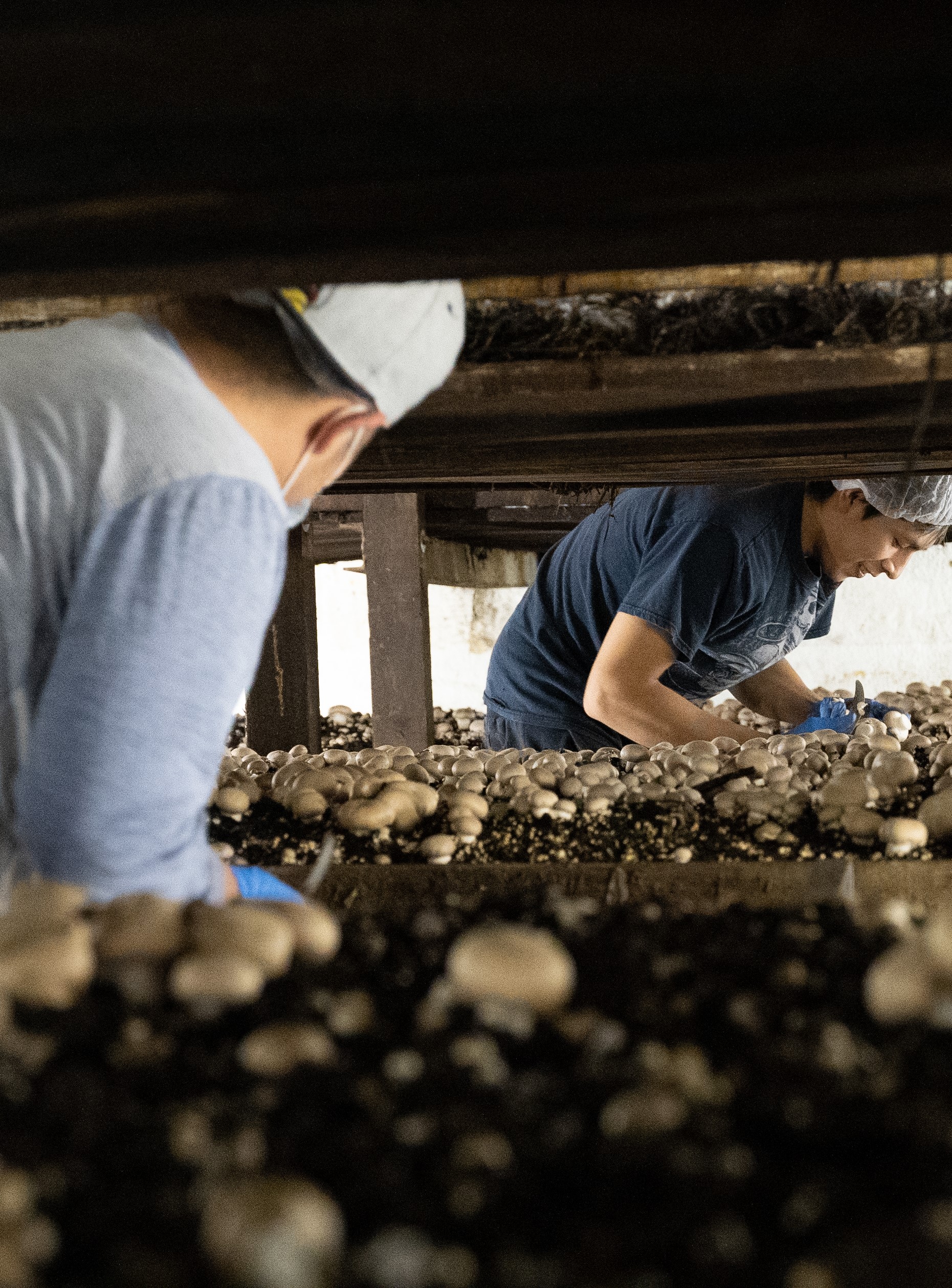
Sustainability: Healthy on the Plate, Gentle on the Planet
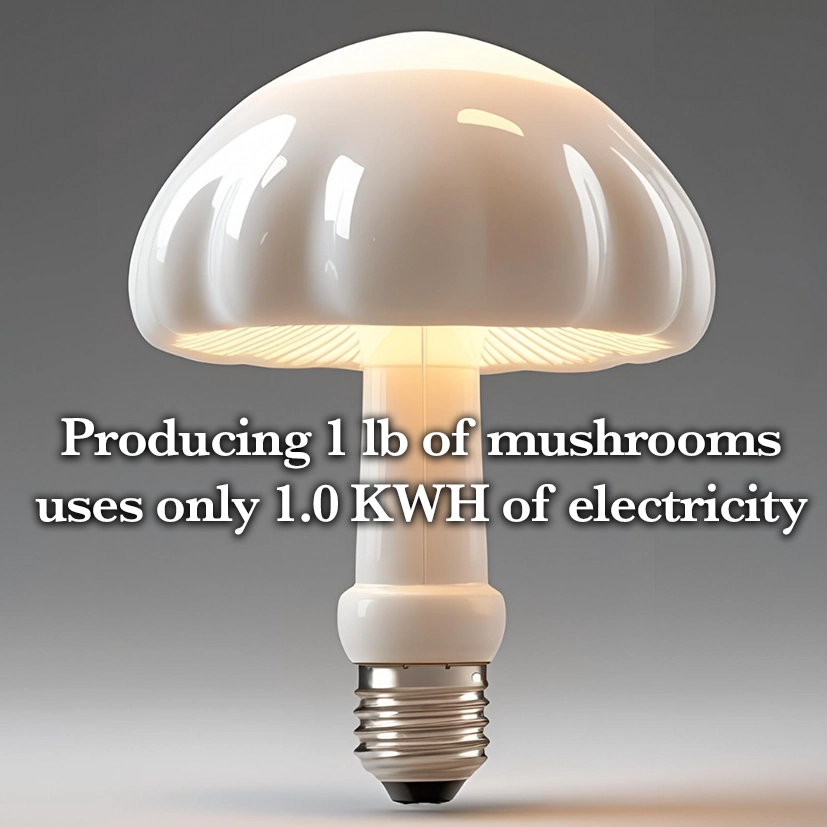
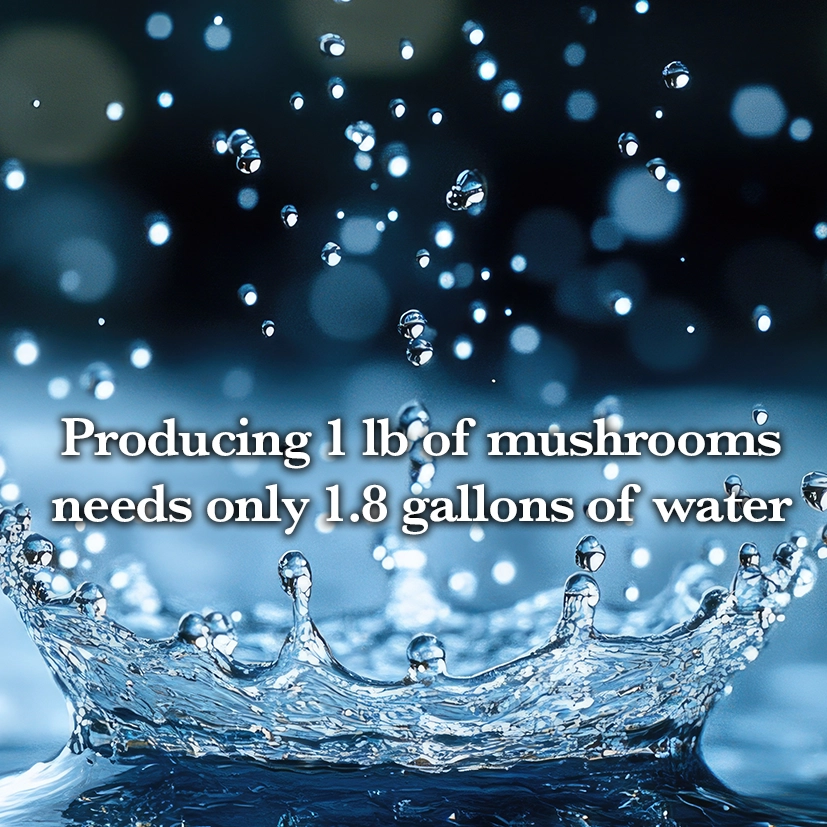
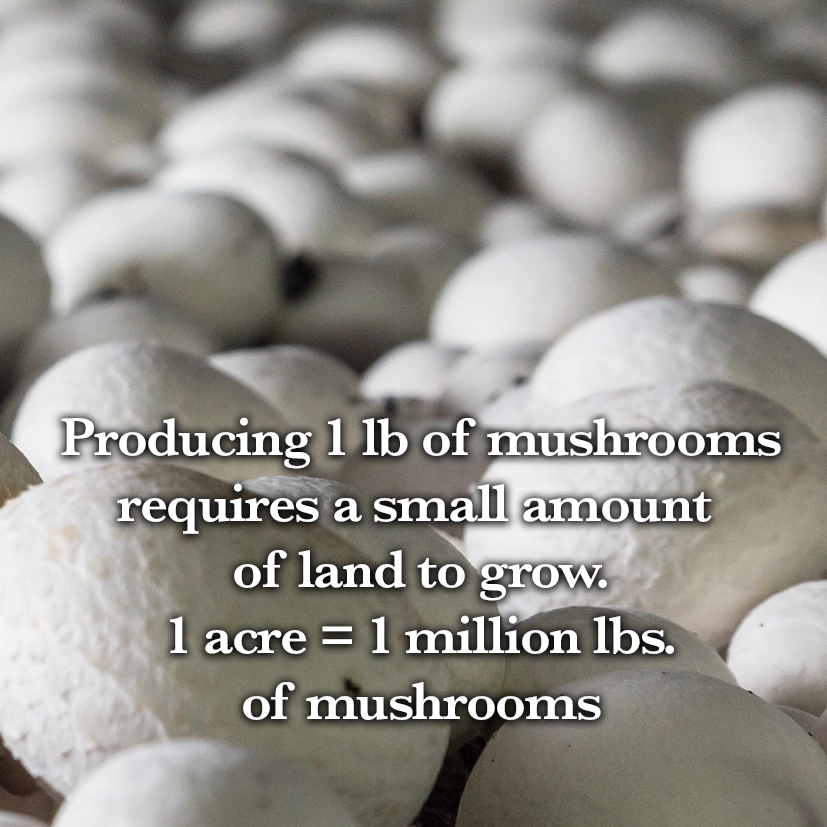
Mushrooms are the original recyclers – they convert waste products from other agricultural sectors. Our growing medium includes hay, straw, corn cobs, cocoa shells, brewers’ grain, and cotton hulls. Once crops are harvested, the growing medium is upcycled into nitrogen-rich, nutrient-dense potting soil.
Other sustainability facts about mushrooms include:
- A pound of mushrooms requires only 1.8 gallons of water to grow. It takes 1000 times as much water, 1,800 gallons, to produce 1 pound of beef.
- Up to 1 million pounds of mushrooms can be grown on just one acre of land, due to the vertical use of space in our mushroom houses.
- It only takes 1 kilowatt hour of energy to grow a pound of mushrooms. Remember, they grow in the dark!
- Growing a pound of mushrooms generates only 0.7 pounds of CO2 equivalent emissions, about half that of wheat.
- With a growth cycle of 6-10 weeks, a mushroom farm can produce up to 8 crops a year. Each crop is harvested in 3 ‘breaks’, so some growing medium and equipment can be cleaned and reused for multiple crops!
To learn more about the Sustainability of Mushroom Production, CLICK HERE FOR A FACT SHEET :
